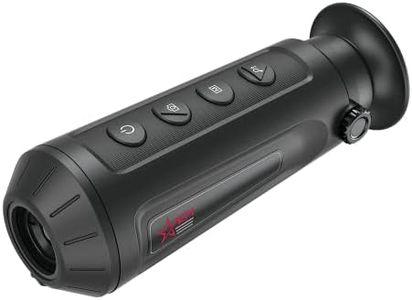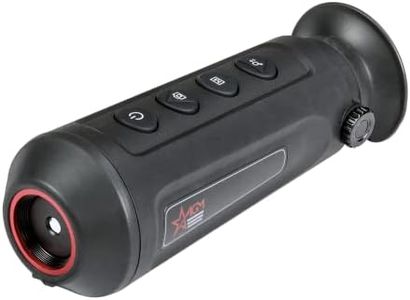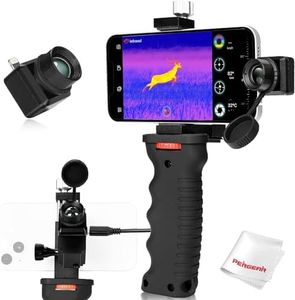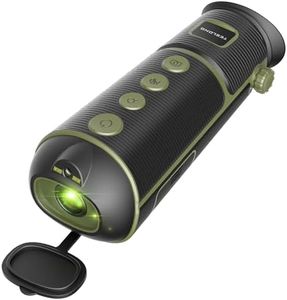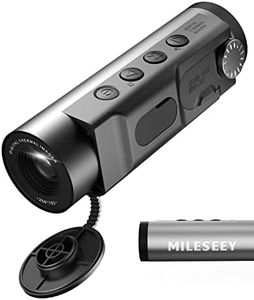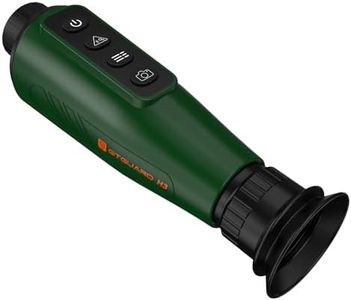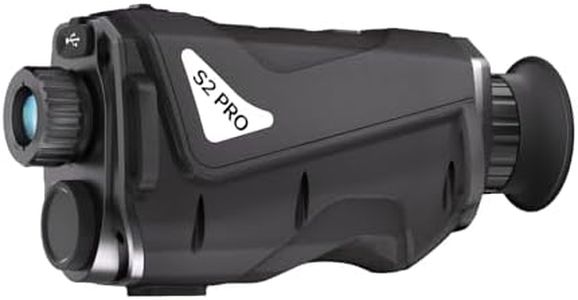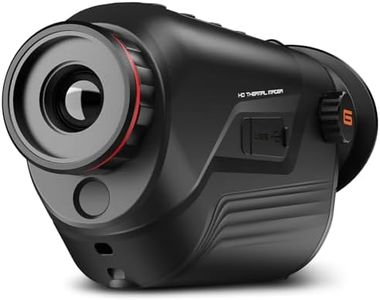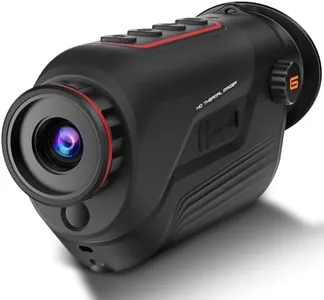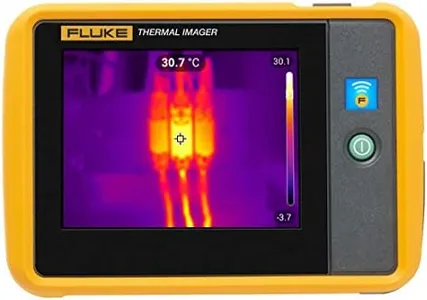We Use CookiesWe use cookies to enhance the security, performance,
functionality and for analytical and promotional activities. By continuing to browse this site you
are agreeing to our privacy policy
10 Best Thermal Imaging Scope
From leading brands and best sellers available on the web.By clicking on a link to a third party's website, log data is shared with that third party.
Buying Guide for the Best Thermal Imaging Scope
Choosing a thermal imaging scope can be both exciting and a bit overwhelming given the variety of features available. Thermal scopes allow you to see heat signatures in low-light or no-light environments, making them useful for wildlife observation, security, search and rescue, and more. The goal is to select a scope that fits your primary need—whether that’s long-range viewing, portability, image detail, or ease of use. Before picking, think about your typical scenarios: the distances you work at, how much detail you need, and how rugged the gear needs to be. Understanding the main specifications can help you match a product to your intended use.ResolutionResolution refers to the number of pixels in the thermal sensor and directly impacts the clarity and detail of the image you see. Higher resolutions give you crisper, more detailed images, making it easier to spot and identify objects, especially at longer distances. Thermal scopes typically come in low (e.g., 160x120), mid (e.g., 320x240), and high (e.g., 640x480 or more) resolutions. If you need to spot tiny heat differences or identify objects at a distance, go for a higher resolution. For general detection at shorter ranges, a lower or mid-range sensor is often enough.
Detection RangeDetection range is how far the scope can spot a heat source. This is influenced by both the resolution and the lens size. Short-range scopes may allow detection up to a few hundred yards, while long-range scopes can spot heat well beyond that, sometimes over a thousand yards. Consider how far you need to see: for most hunting or property surveillance, mid-range is sufficient, but for search and rescue or open land observation, a longer detection range is valuable.
Lens Size (Objective Lens Diameter)Lens size determines how much infrared light the scope collects, influencing both the image brightness and detection distance. Smaller lenses (e.g., 20-30mm) are lighter and better for portability, while larger lenses (e.g., 50mm and above) deliver more detail and longer range. Choose a smaller lens if you need a compact, lightweight scope for short distances. Go larger if long-range clarity is key to your usage.
Refresh RateRefresh rate, measured in Hertz (Hz), is how many times per second the image updates. Higher refresh rates (50–60 Hz) give smoother, more natural images, which is especially useful if you’ll be scanning or tracking moving targets. Lower rates (30 Hz or less) tend to be fine for stationary observation, but can feel choppy with fast movement. If your subjects are mainly still or slow-moving, a lower refresh rate is okay, but for dynamic environments, go higher.
Display Type and QualityThe scope's display shows the thermal image, so the type (such as LCD or OLED) and its resolution affect how well you can interpret what you’re seeing. Sharper, high-contrast displays make it easier to spot subtle temperature differences and details. If you'll use the scope for long periods or need to quickly identify small objects, prioritize scopes with high-quality, bright, and easy-to-read displays.
Battery LifeBattery life tells you how long the scope will run before needing a recharge or new batteries. Shorter battery life means more frequent changes or recharges, which can be inconvenient in the field. Depending on your usage—whether for brief observation sessions or all-night searches—look for models that promise battery life matching or exceeding your typical outings. For longer activities, scopes that allow easy battery swaps or use widely available battery types are a bonus.
Durability and Weather ResistanceHow rugged and weatherproof the scope is can be crucial, especially if you’ll be outside in varying conditions. Some scopes are built to withstand rain, dust, drops, and temperature extremes, often rated with IP (Ingress Protection) numbers. If you need a scope for tough, unpredictable environments, prioritize robust construction and higher weatherproof ratings. For indoor or controlled use, basic durability is usually enough.
User Interface and ControlsHow easy it is to operate the scope matters, especially in the dark or when wearing gloves. Simple, intuitive controls help you quickly adjust settings or move through menus. If you're new to thermal imaging or need to use the scope in stressful situations, look for large buttons, logical menus, and straightforward operation. Advanced users might appreciate customizable settings, but ease of use benefits everyone.

